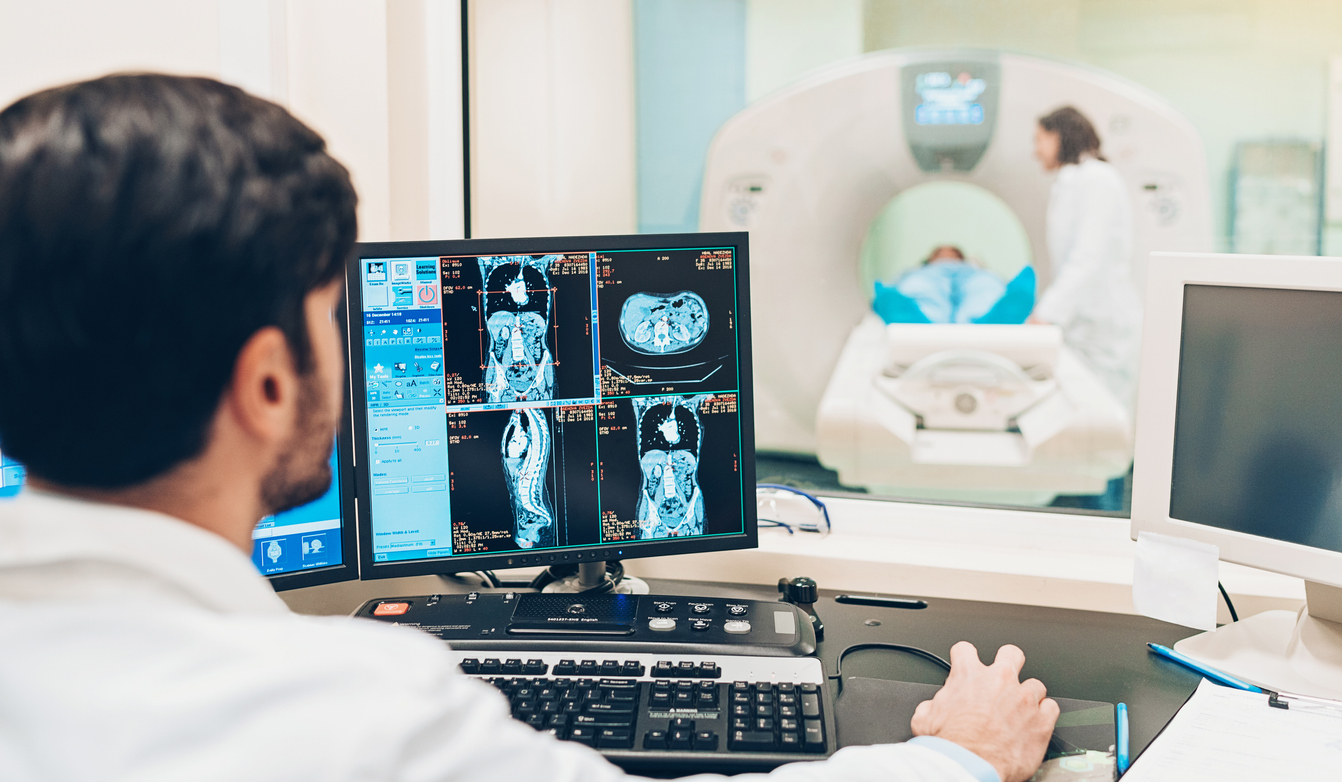What is radiology, and what are its procedures and use?

Radiology is the branch of medicine that uses medical imaging to diagnose and treat diseases within the human body. Various imaging techniques such as X-ray radiography, ultrasound, computed tomography (CT), nuclear medicine, and magnetic resonance imaging (MRI) are used to diagnose or treat various conditions.
Radiology procedures are performed for various reasons, including investigating symptoms such as pain or swelling, screening for certain diseases such as cancer, or guiding procedures such as biopsies or surgery.
Uses of radiology
Radiology has several uses
- To diagnose and treat cancer:
Now you know what is radiology, now let’s talk about the procedures. Radiation therapy is a cancer treatment that uses high-energy radiation beams to kill cancer cells. The two main types of radiation therapy are external and internal beam radiation therapy. External beam radiation therapy uses a machine to direct the radiation beams at the cancerous area from outside the body. Internal beam radiation therapy involves placing radioactive material inside the body near the cancerous area.
Radiation therapy can be used as a standalone treatment or in combination with other cancer treatments, such as surgery or chemotherapy. When used in combination with other treatments, it is typically given after the other treatments have been completed.
- To diagnose heart disease:
An angiogram is a type of X-ray used to visualize the blood vessels in the body. This procedure is typically used to diagnose or treat heart disease. During an angiogram, a contrast material is injected into the arteries to make them more visible on the X-ray. This material can help identify blockages or narrowings in the arteries that could be causing heart problems.
Angiograms are generally safe, but there is a small risk of complications such as bleeding or infection. This procedure is an important tool for diagnosing and treating heart disease.
- To diagnose and treat gastrointestinal disorders:
A barium enema is an X-ray procedure used to diagnose and treat various gastrointestinal disorders. The procedure involves the administration of a contrast agent, typically barium sulfate, into the rectum and colon. This allows the radiologist to obtain detailed images of the gastrointestinal tract.
In some cases, the barium enema may also be used to deliver therapeutic agents, such as corticosteroids or antibiotics, directly to the site of an infection or inflammation. The procedure is generally well-tolerated and is considered to be safe for both adults and children.
- To diagnose and treat genitourinary disorders:
A cystogram is a type of X-ray used to diagnose and treat genitourinary disorders. Cystograms are performed by inserting a catheter into the bladder and then filling the bladder with contrast material. The contrast material allows the bladder and urethra to be seen more clearly on the X-ray.
Cystograms can diagnose various genitourinary disorders, such as urinary tract infections, vesicoureteral reflux, and bladder tumors. In addition, cystograms can also be used to help guide the placement of a stent or catheter in the urinary tract. Cystograms are generally well tolerated and have few side effects. The most common side effect is discomfort during the procedure.
- To diagnose and treat musculoskeletal disorders:
Musculoskeletal disorders are a common type of injury that can cause pain and disability. MRI is a valuable tool for diagnosing these disorders, as it can provide clear images of the bones, joints, and surrounding tissues.
MRI can also guide treatment, such as injections or surgery. In some cases, MRI may be used to monitor the progress of a musculoskeletal disorder over time. This can help determine whether treatment is effective and whether any changes in the condition are due to the natural progression of the disorder or to other factors.
- To diagnose and treat neurological disorders:
A CT scan can be used to diagnose and treat neurological disorders.
- To screen for breast cancer:
A mammogram is a type of X-ray that can be used to screen for breast cancer.
- To screen for colorectal cancer:
A colonoscopy is a type of X-ray that can be used for colorectal cancer.
- To screen for osteoporosis:
A bone density test is a type of X-ray that can screen for osteoporosis.
- To monitor fetal development:
An ultrasound can be used to monitor fetal development. Many types of X-ray procedures can be used to diagnose and treat various conditions.
Why is insurance important if you have gone through radiology?
A pocket insurance policy is important for anyone who has undergone a radiology procedure because it can help to cover the cost of any complications that may arise. If you want good medical pocket insurance, go for health prime by Bajaj Finserv.
Conclusion
Many different types of X-ray procedures can be used to diagnose and treat a variety of conditions. However, it is important to have a pocket insurance policy in place in case of any complications.